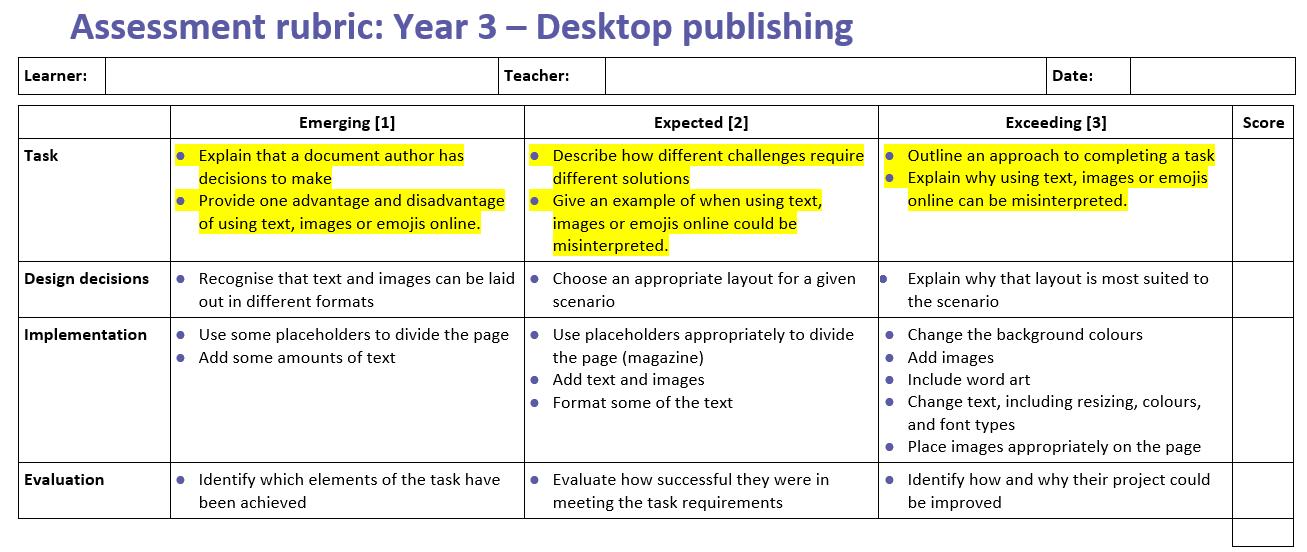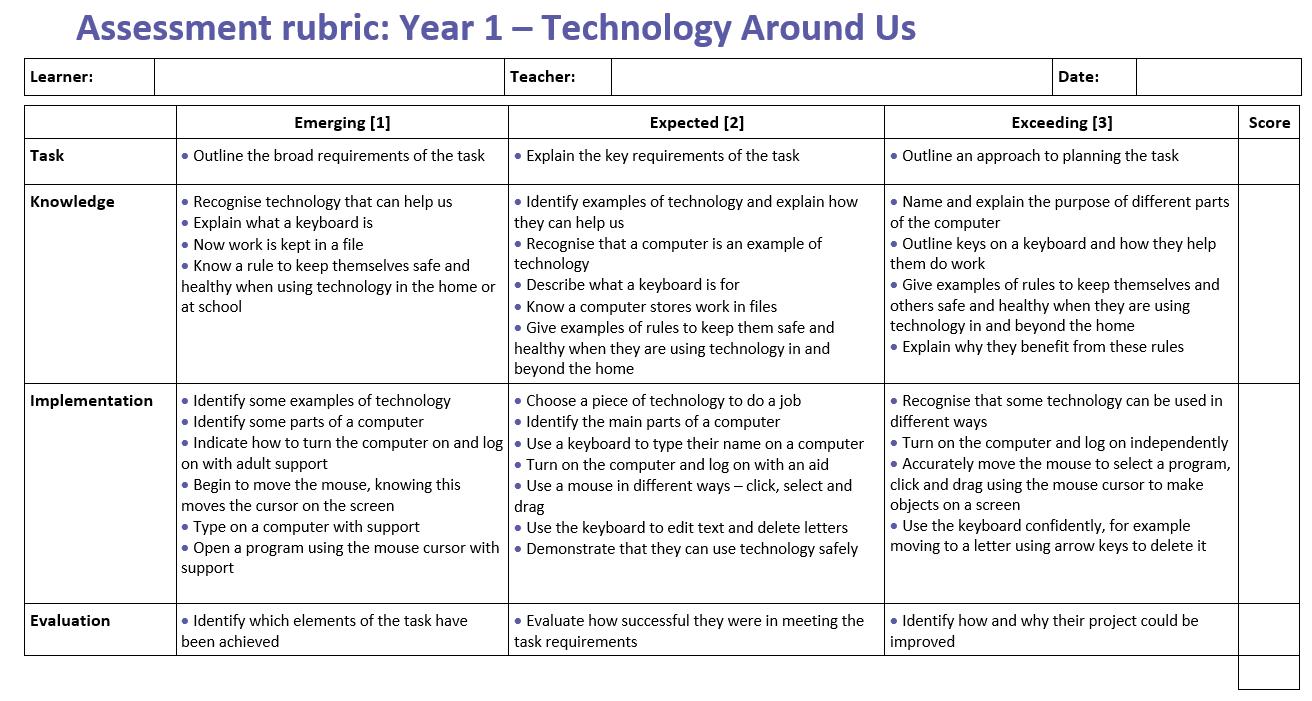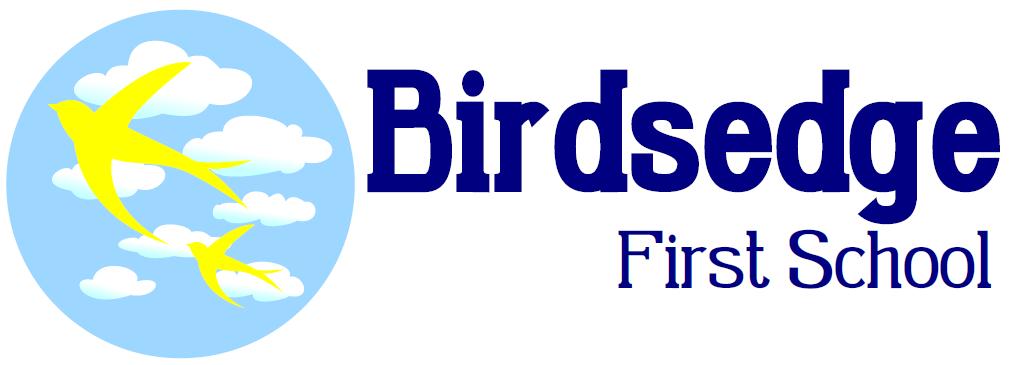

Computing
Curriculum Map Document
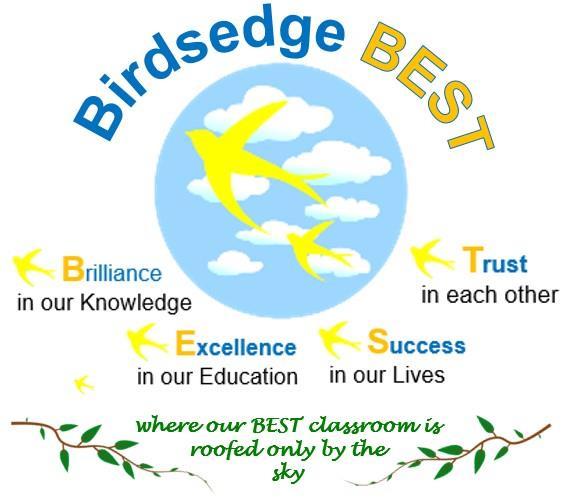
1. Statement of Intent
As set out in Section 3 of the National Curriculum, a high quality computing curriculum:
‘equips pupils to use computational thinking and creativity to understand and change the world. Computing has deep links with mathematics, science, and design and technology, and provides insights into both natural and artificial systems. The core of computing is computer science, in which pupils are taught the principles of information and computation, how digital systems work, and how to put this knowledge to use through programming. Building on this knowledge and understanding, pupils are equipped to use information technology to create programs, systems and a range of content. Computing also ensures that pupils become digitally literate – able to use, and express themselves and develop their ideas through, information and communication technology – at a level suitable for the future workplace and as active participants in a digital world’.
Computer Science
How computer and computer systems work and how they are designed and programmed
Foundations
Information Technology
Looking at technology in our lives and the purposeful use of existing programmes to develop products and solutions
Applications
Digital Literacy
The skills knowledge and understanding needed in order to participate fully and safely in an increasingly digital world
Implications
At Birdsedge First School, we aim to provide a consistent and comprehensive computing curriculum that provides children with the knowledge and skills they need in the areas above. Wrapped around this is a culture of being a safe computer and internet user and contributing to the world of technology positively.
2. Computing at Birdsedge First School an Overview
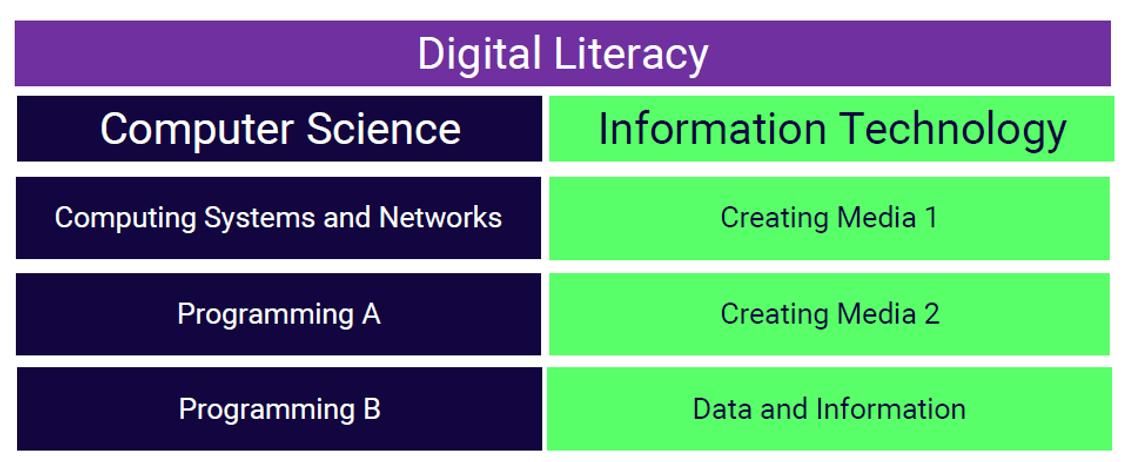

Dedicated Computing lessons are taught weekly to all year groups using Teach Computing. This is planned on a two year cycle to meet the needs of our mixed aged planning but with the 6 units spread over 2 years to allow for progression and deeper learning in each area before moving on.
The units for key stages 1 and 2 are based on a spiral curriculum. This means that each of the themes is revisited regularly (at least once in each year group), and pupils revisit each theme through a new unit that consolidates and builds on prior learning within that theme. This style of curriculum design reduces the amount of knowledge lost through forgetting, as topics are revisited yearly. It also ensures that connections are made.
In addition to the computing knowledge and skills taught we also use Project Evolve to ensure children are equipped to stay safe in a digital world.
Every Computing lesson begins with a whole class starter session around e-safety using the long term plan over the page.


3. Whole School Long Term Plan
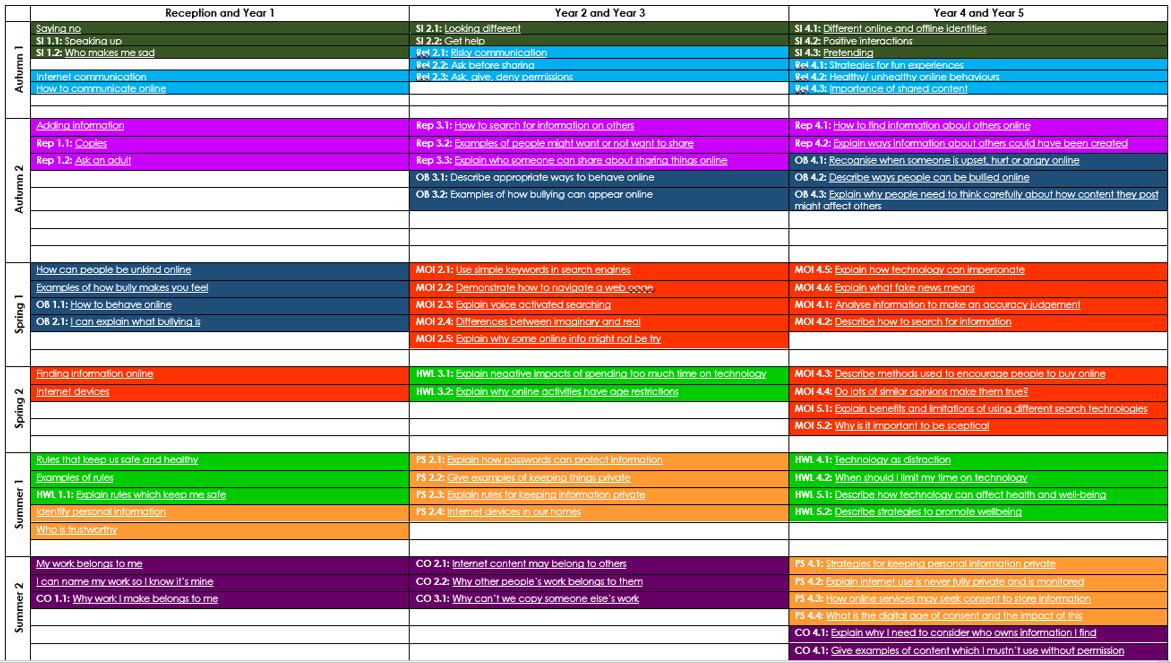
Whole School Long Term Plan –
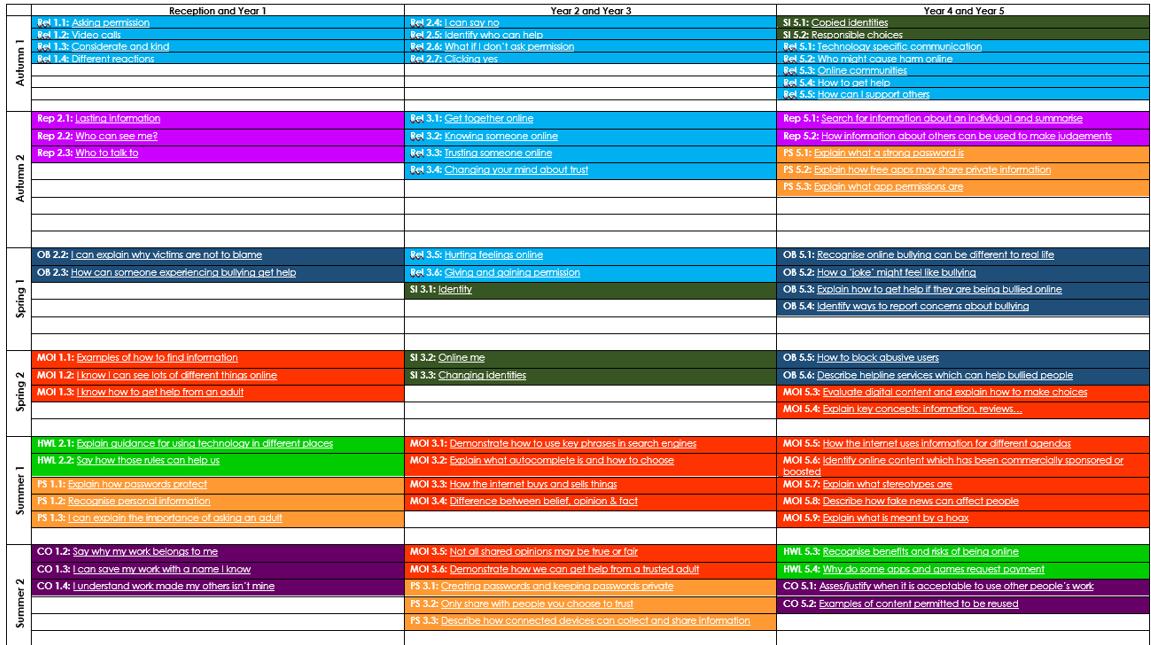
Whole School Long Term Plan – Teach Computing
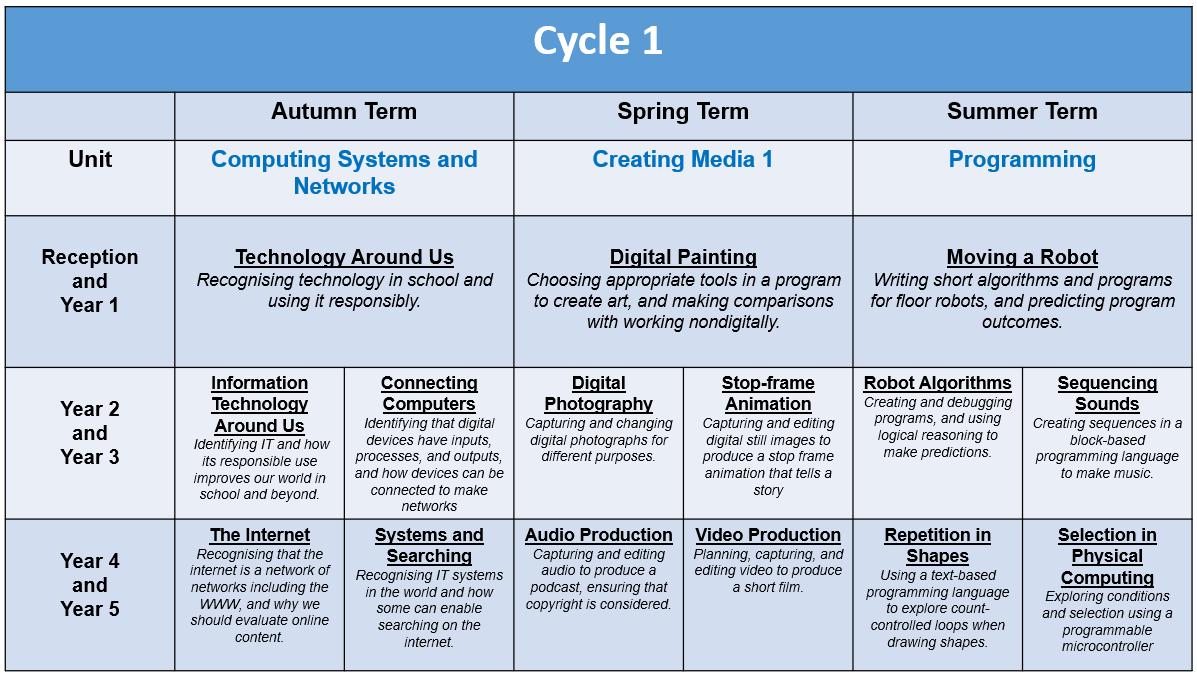
Whole School Long Term Plan – Teach Computing
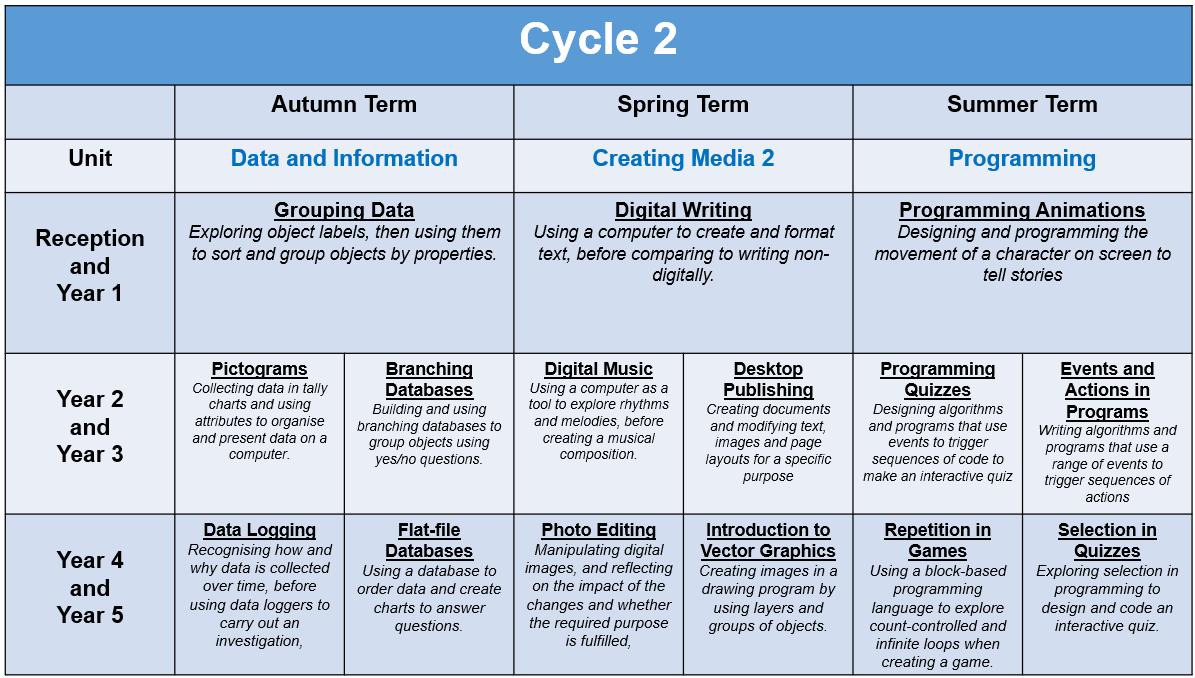
3. Progression of Skills
The units for key stages 1 and 2 are based on a spiral curriculum. This means that each of the themes is revisited regularly (at least once in each year group), and pupils revisit each theme through a new unit that consolidates and builds on prior learning within that theme. This style of curriculum design reduces the amount of knowledge lost through forgetting, as topics are revisited yearly. It also ensures that connections are made.
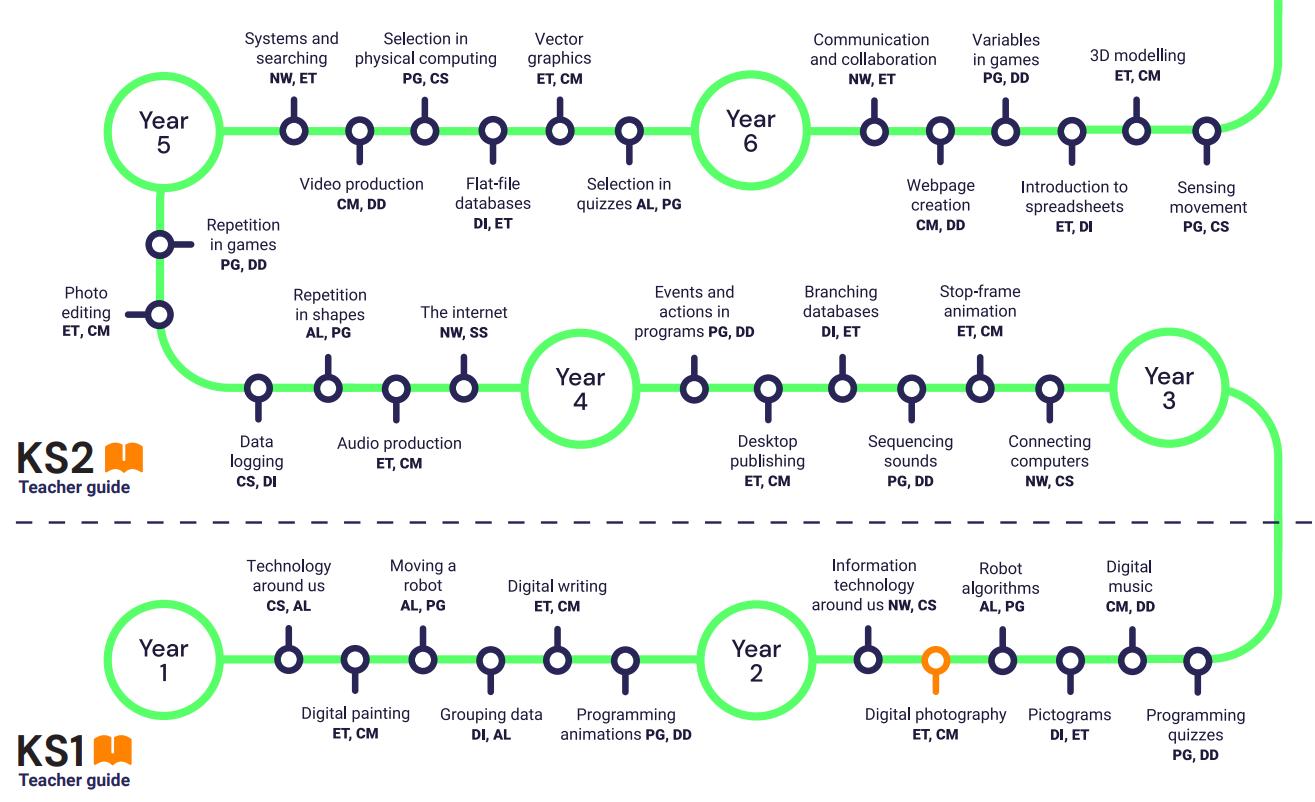
4. Assessment
Through teach computing each unit provides an assessment rubric for summative assessment of pupil outcomes in each area.
